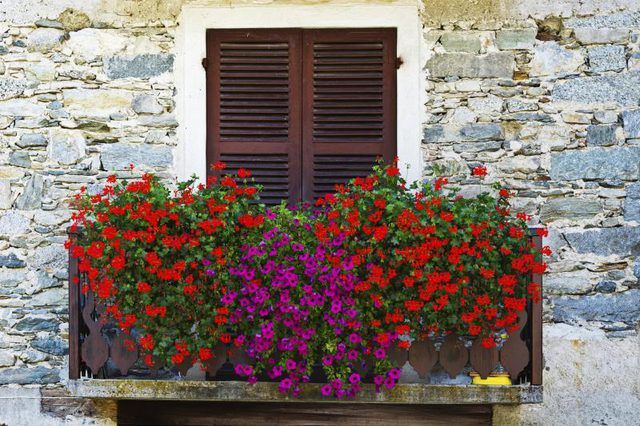Bulbs
Flower Basics
Flower Beds & Specialty Gardens
Flower Garden
Garden Furniture
Garden Gnomes
Garden Seeds
Garden Sheds
Garden Statues
Garden Tools & Supplies
Gardening Basics
Green & Organic
Groundcovers & Vines
Growing Annuals
Growing Basil
Growing Beans
Growing Berries
Growing Blueberries
Growing Cactus
Growing Corn
Growing Cotton
Growing Edibles
Growing Flowers
Growing Garlic
Growing Grapes
Growing Grass
Growing Herbs
Growing Jasmine
Growing Mint
Growing Mushrooms
Orchids
Growing Peanuts
Growing Perennials
Growing Plants
Growing Rosemary
Growing Roses
Growing Strawberries
Growing Sunflowers
Growing Thyme
Growing Tomatoes
Growing Tulips
Growing Vegetables
Herb Basics
Herb Garden
Indoor Growing
Landscaping Basics
Landscaping Patios
Landscaping Plants
Landscaping Shrubs
Landscaping Trees
Landscaping Walks & Pathways
Lawn Basics
Lawn Maintenance
Lawn Mowers
Lawn Ornaments
Lawn Planting
Lawn Tools
Outdoor Growing
Overall Landscape Planning
Pests, Weeds & Problems
Plant Basics
Rock Garden
Rose Garden
Shrubs
Soil
Specialty Gardens
Trees
Vegetable Garden
Yard Maintenance
How to Plant Geranium Flowers
How to Plant Geranium Flowers. Geraniums (Pelargonium spp.) aren't just easy on the eyes -- they're easy on your green thumb, too. The flowers need little maintenance, tolerating many kinds of soil, surviving periodically dry conditions and resisting most insect pests. Most species can be grown as perennials in U.S. Department of Agriculture plant...

Geraniums (Pelargonium spp.) aren't just easy on the eyes -- they're easy on your green thumb, too. The flowers need little maintenance, tolerating many kinds of soil, surviving periodically dry conditions and resisting most insect pests. Most species can be grown as perennials in U.S. Department of Agriculture plant hardiness zones 10 through 11. However, you can enjoy geraniums anywhere as a vibrantly hued annual.
Check the Calendar and Thermometer
To get the most out of your geraniums, plant them as soon as possible in spring so you can enjoy their lush foliage all growing season and the colorful blossoms all summer. Wait until the last frost date has passed in your area. Ideally, also check an outdoor thermometer. Night temperatures should not dip below 60 degrees Fahrenheit for optimal geranium growth.
Select the Perfect Planting Site
Geraniums need at least four hours of sunlight every day, but you'll see more blossoms and thicker plant growth if you put them in direct sunlight for eight hours or more. To maximize sun exposure, you may wish to choose a planting site on the east- or west-facing side of your property. Additionally, the site should be open and have good air circulation -- geraniums hedged in by other plants may experience fungal diseases.
Prepare the Soil for Success
If you're growing your geraniums directly in the ground in a flowerbed or as an edging accent, mix in a couple inches of organic matter like compost or peat moss. This enhances soil drainage and aeration, which improves plant health.
If you plant your geraniums in pots to add dashes of color and texture to a windowsill or patio, make your own geranium-friendly potting mix by combining equal parts peat moss, garden soil and sand. Mix the ingredients thoroughly.
Measure for Proper Spacing and Depth
Dig a hole in your geranium's new home -- that may be your flowerbed or a container -- that is the size of the plant's current pot. Gently remove the geranium and place it into the hole. When transplanting, always bury geraniums at exactly the same level that they were buried in the original pot. Tap down lightly to settle the soil.
If you're transplanting more than one geranium, know their mature size. Depending on the variety, geraniums can grow anywhere from 6 to 24 inches wide. For example, the coconut-scented geranium (Pelargonium grossularioides) grows up to 18 inches wide while the fernleaf-scented geranium (Pelargonium denticulatum) grows up to 24 inches wide. Space the plants a couple inches farther apart than their future mature size to ensure proper air circulation between the plants.
Post-Planting Watering
Water geraniums once every couple of days, or as necessary to keep the soil consistently moist but never soggy. You may need to increase how often you water your geraniums if you notice their leaves wilting or yellowing. When you water, use enough water to moisten the soil to a depth of 8 to 12 inches. This encourages deeper root growth, which in turn enhances overall plant vigor and health. Additionally, always water your geranium at its base. Geraniums do not do well with overhead irrigation, since damp foliage makes the plant susceptible to various diseases.